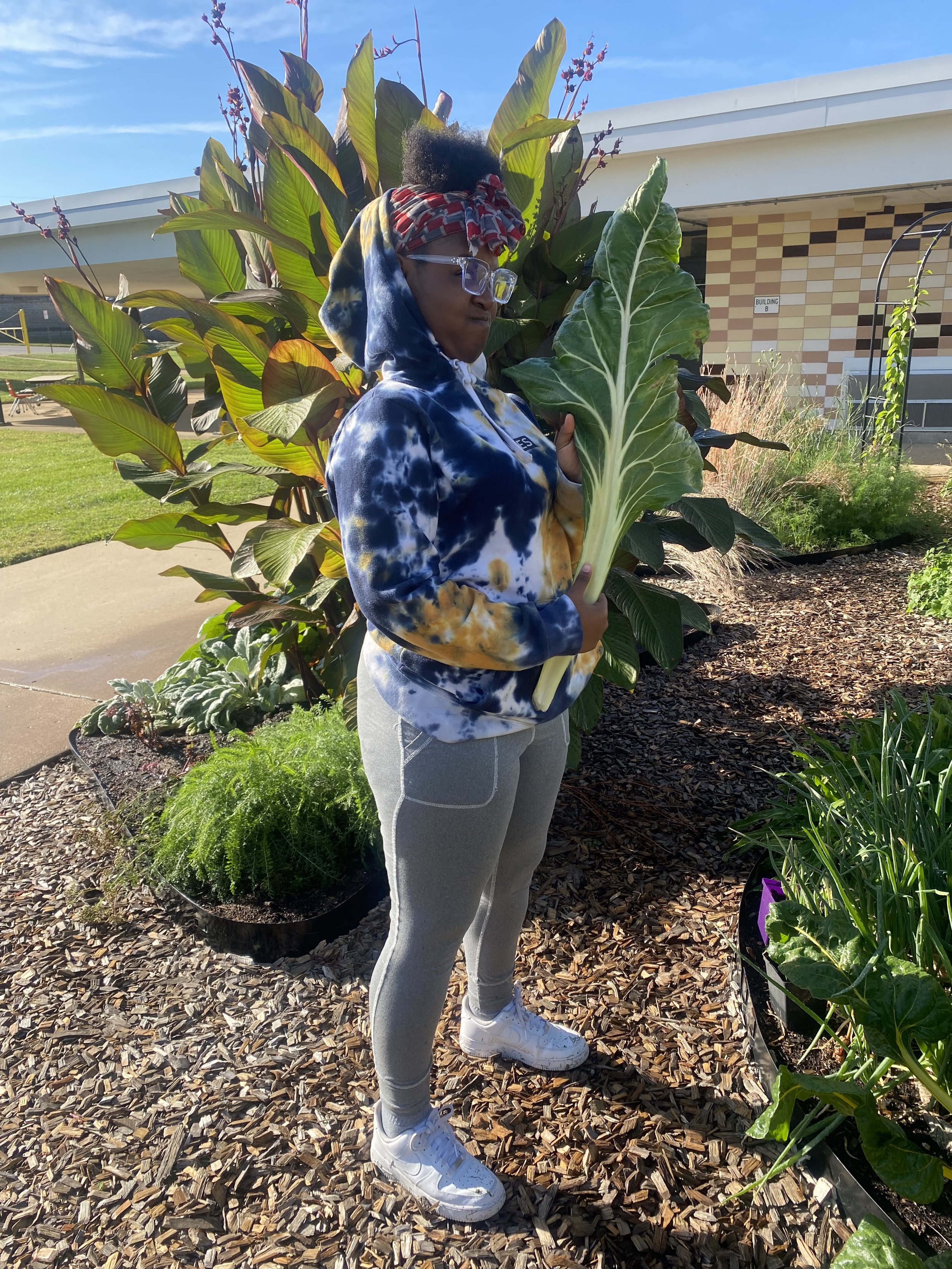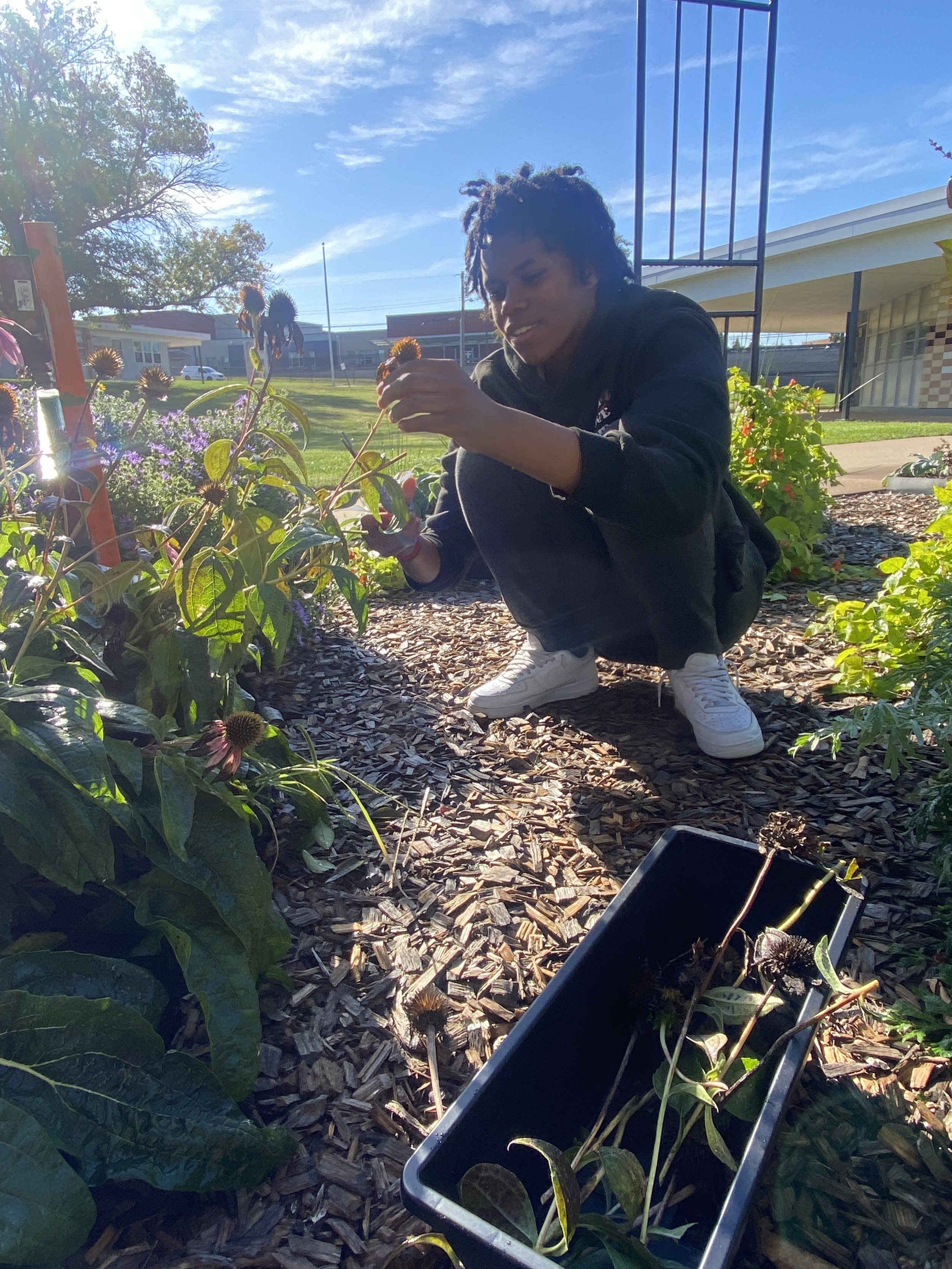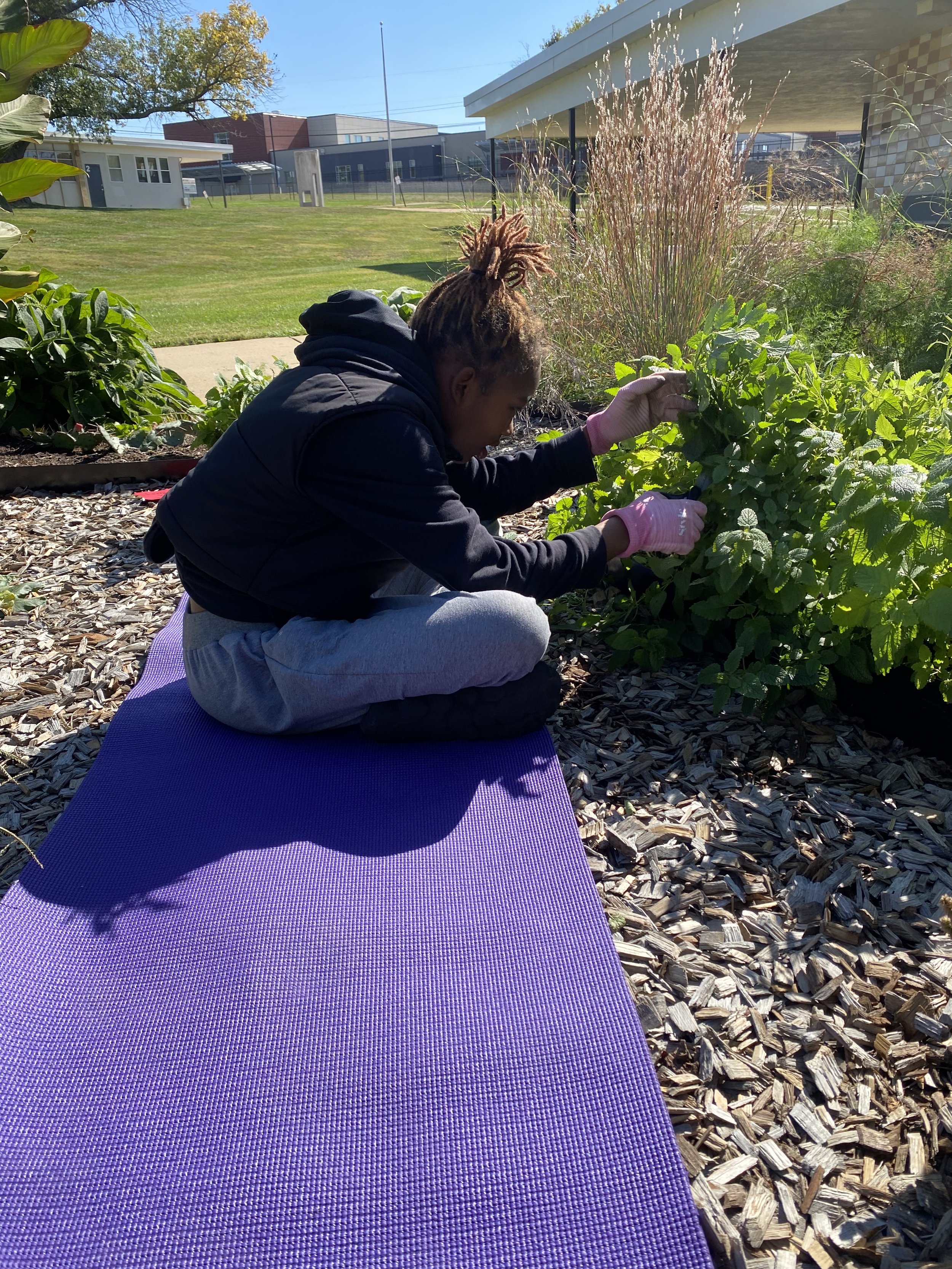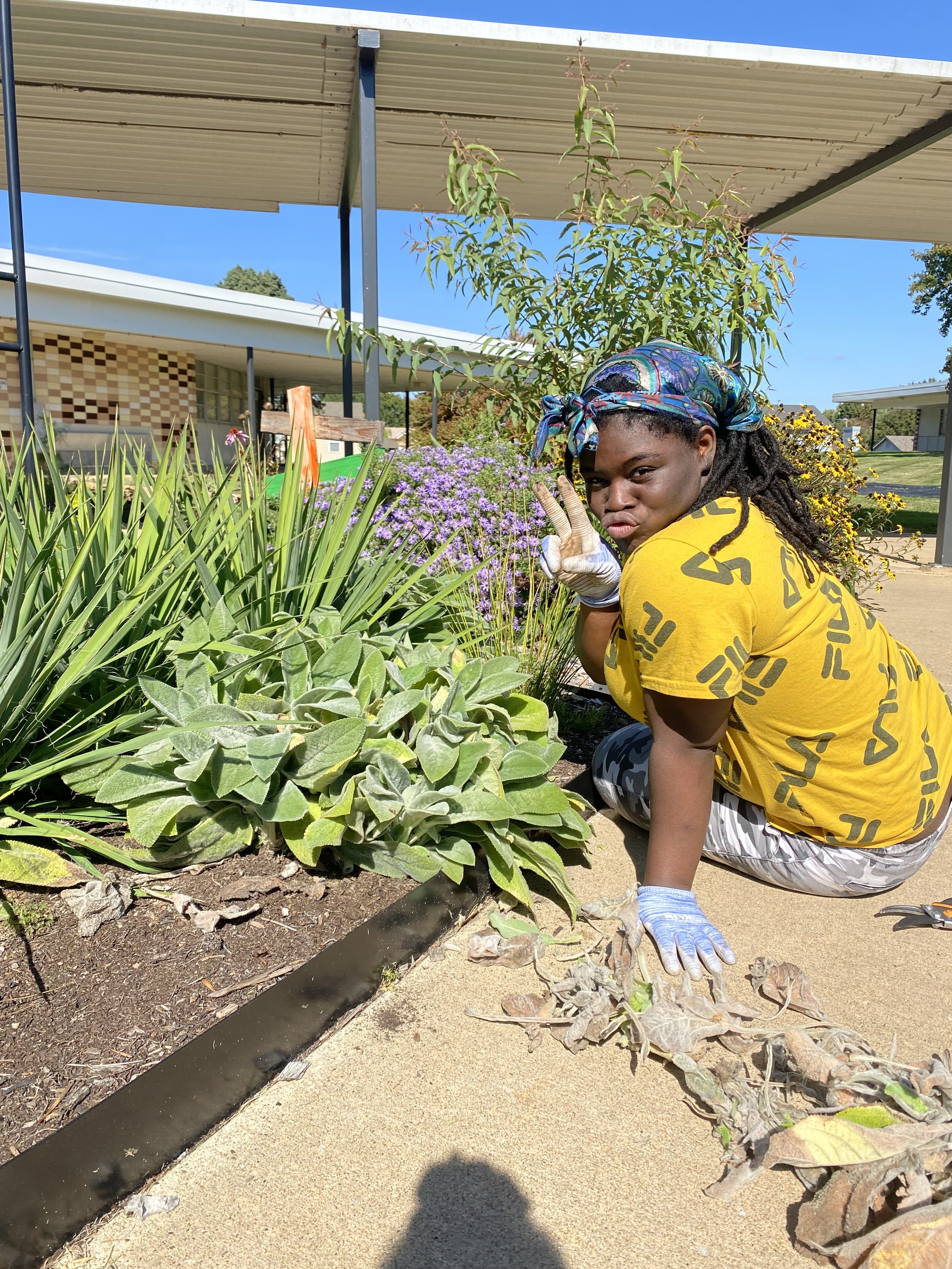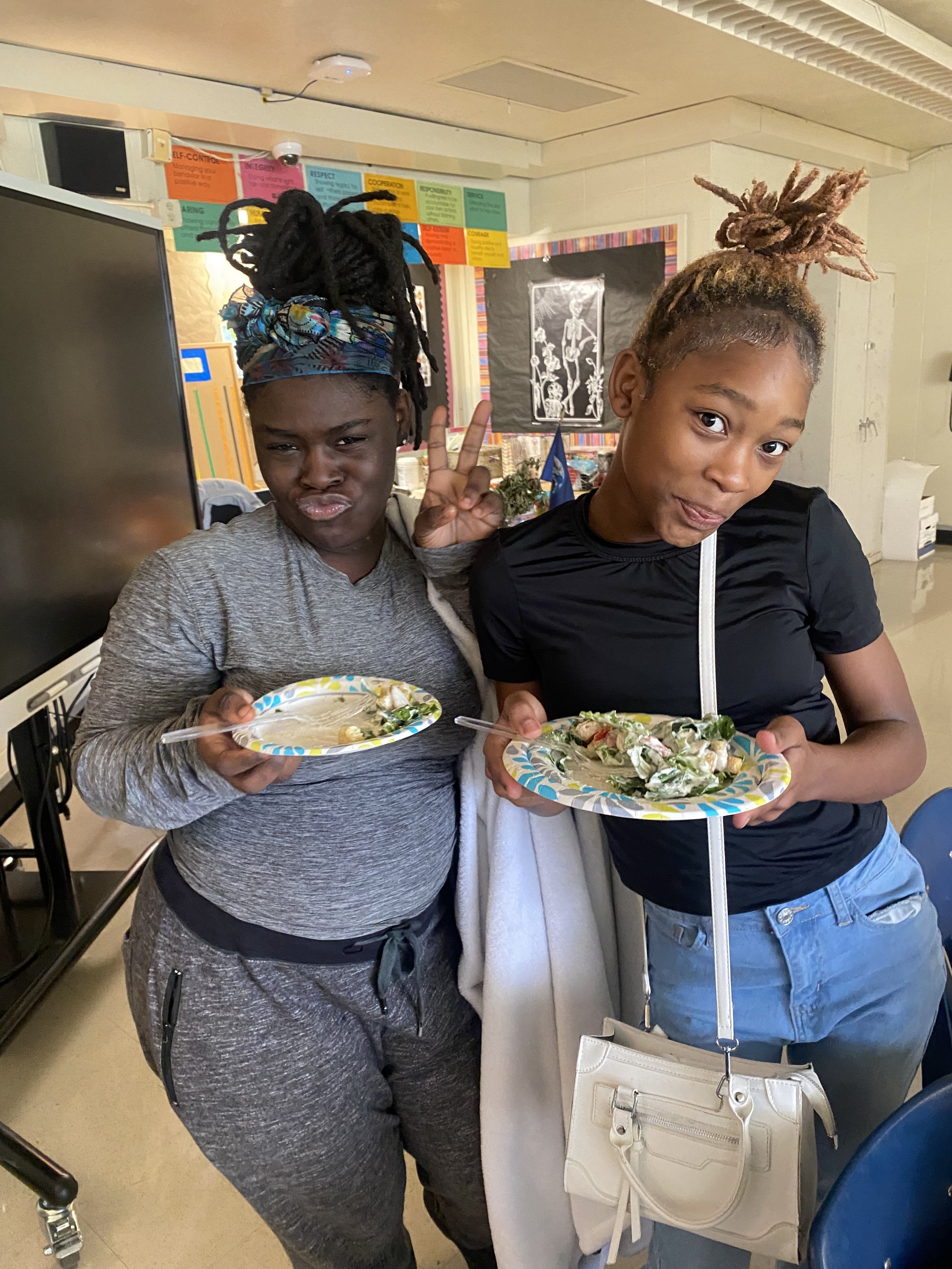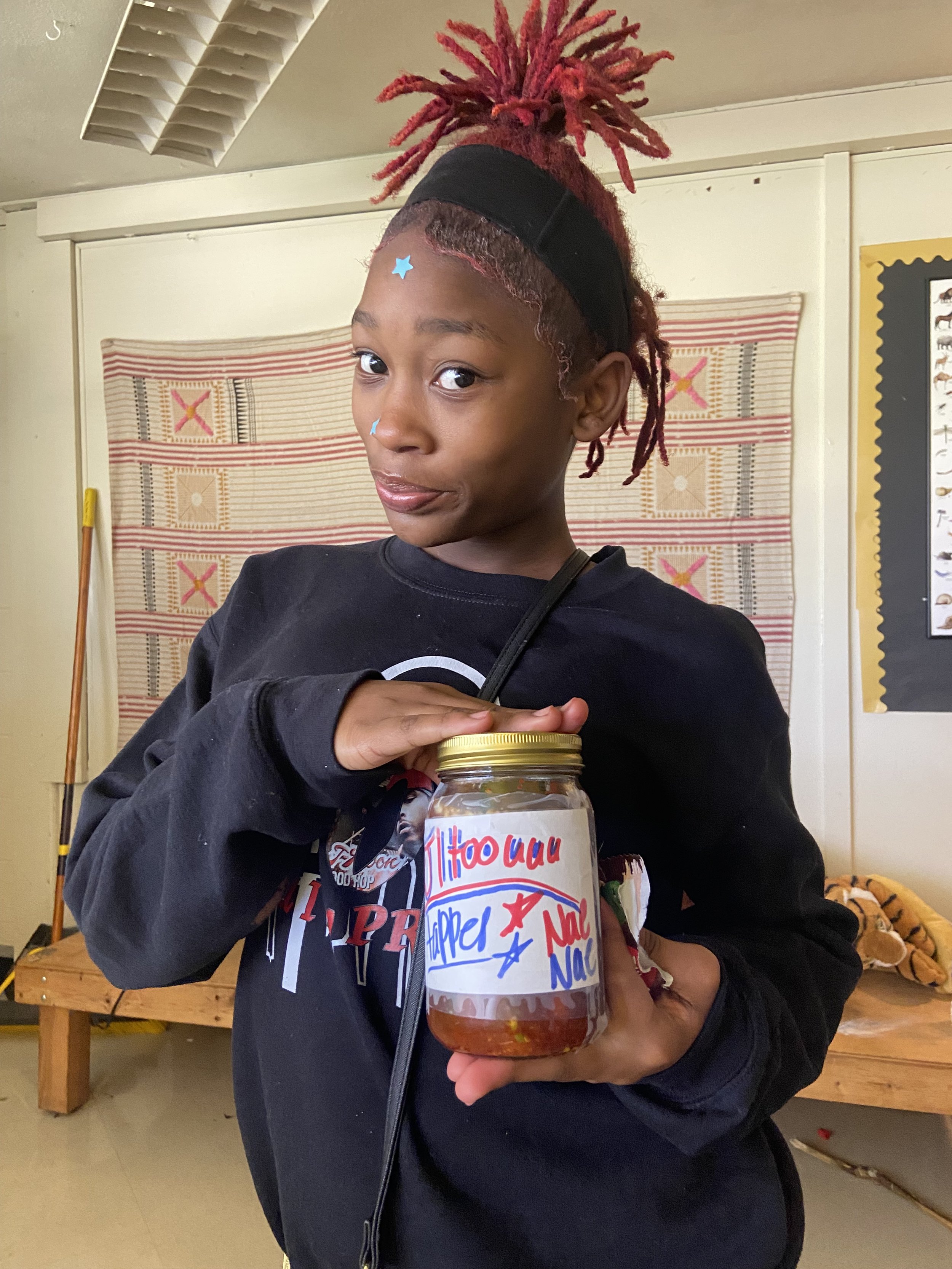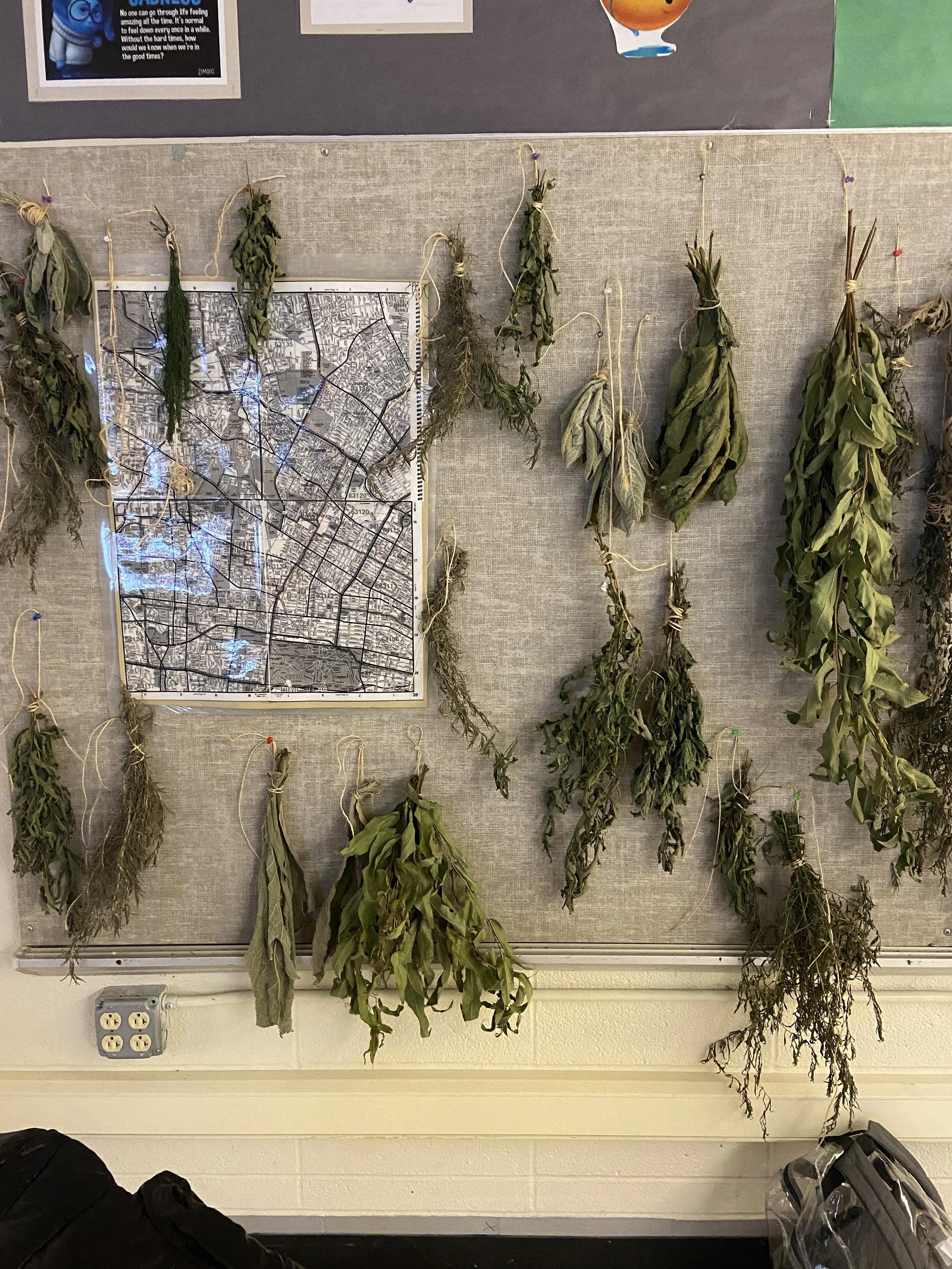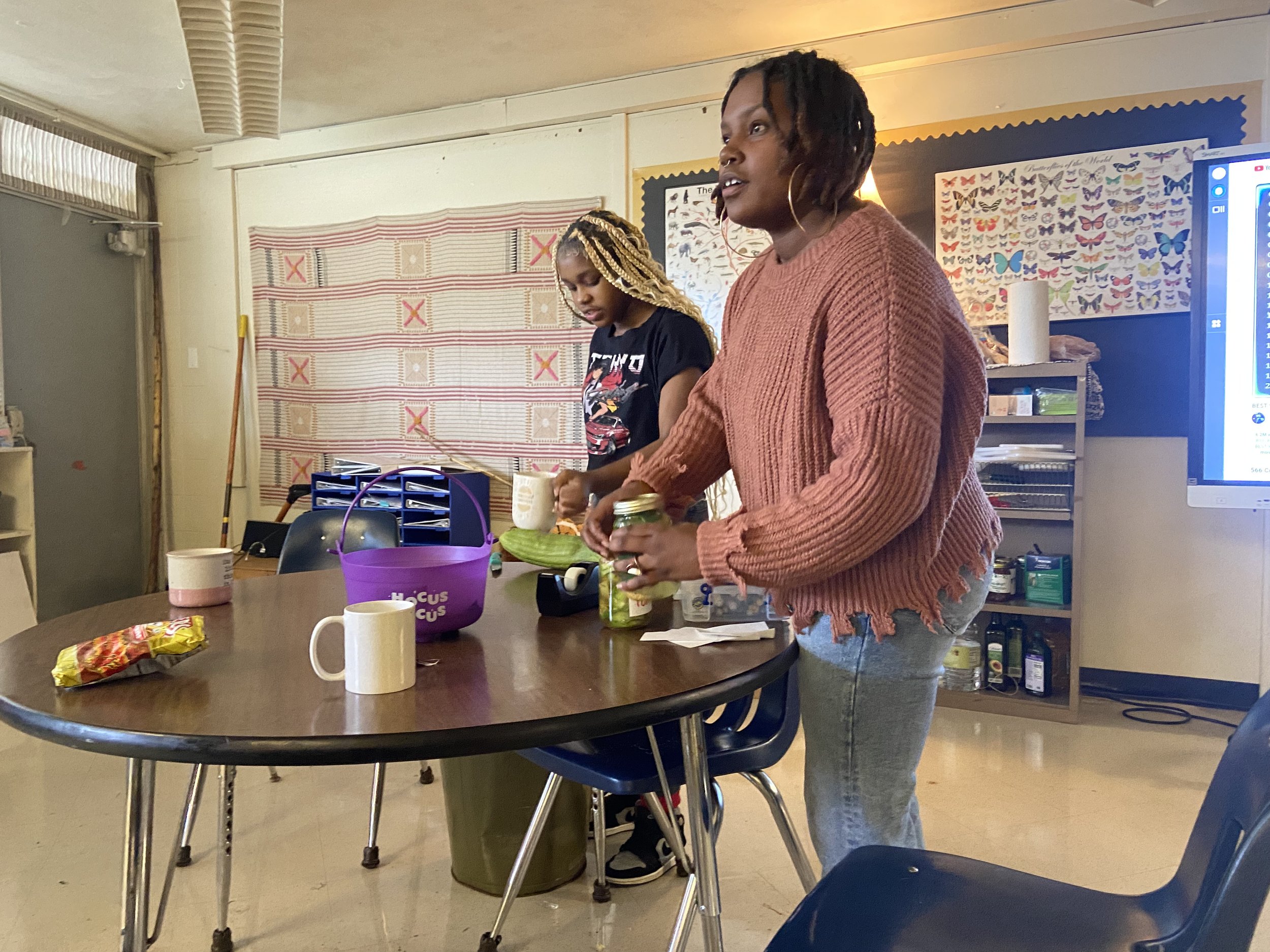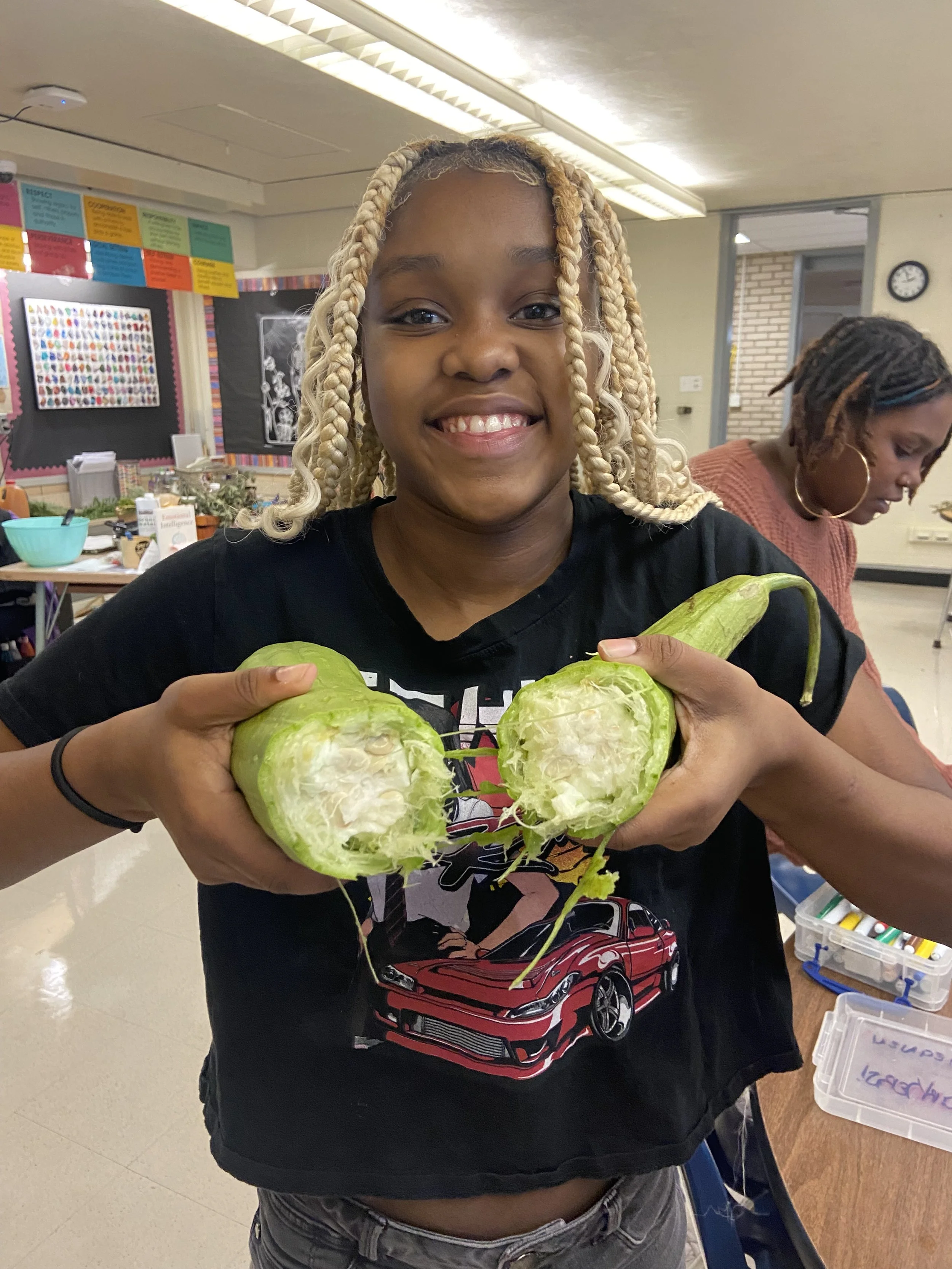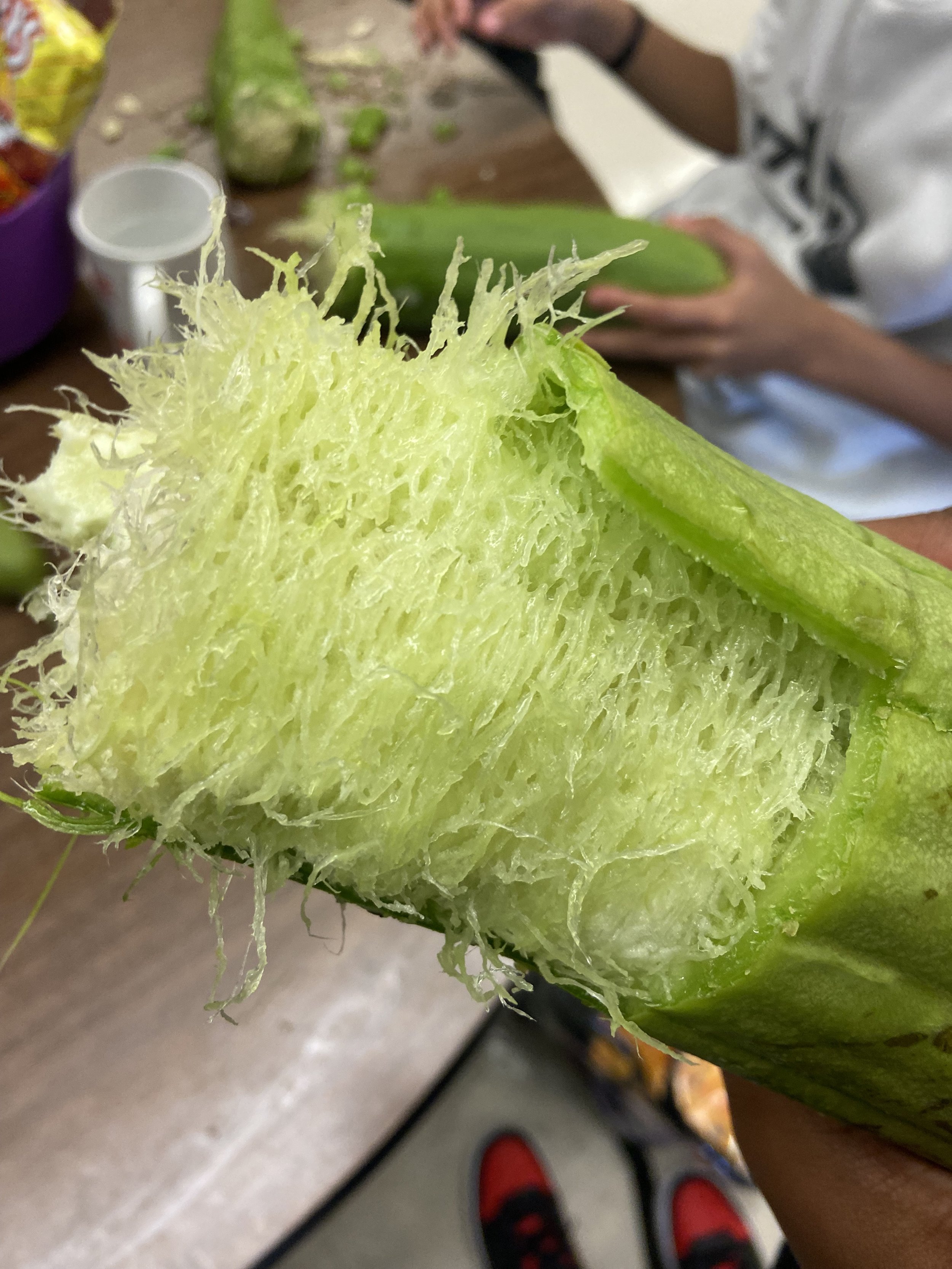Autumn Harvesting & Preserving
We had a bit of a cold snap last night here in St. Louis. Many of us were dashing around covering everything growing outdoors, bringing in potted plants for the season, and snipping parsley for one final meal in case it froze. Likewise, here in Project Lab, our students have been harvesting salad greens, herbs, and other green vegetables for preparing and enjoying in class (in salads and on sandwiches). They also took on the huge task of preparing the garden for winter, including transplanting and potting tons of rosemary to spend the season indoors on the classroom windowsill.
Val writes:
“We spent the other day continuing to overwinter the beds. Taliyah and LaTonja dug up our rosemary bushes. Shawn, Elijah, Jermyylin, and Jermaine raked leaves around the trees and brought them down to the beds in the wheelbarrow so that we could gather them around the plant bases to help hold moisture and keep some heat in as well. I explained the need and demonstrated how to add leaves to the beds. Overall, we got three beds ‘tucked in’ with many more to do this week if it isn’t too cold. It was a fun day! Everyone was pretty into their own task. I also demonstrated how to dig up a plant. We all examined the plant to gain hands-on knowledge of how the roots sit in the ground and absorb water into the plants. It was a cool moment of garden education! The students noticed how sturdy and woody the plant was. I connected this observation back to our reading passage from earlier this week about herbs.
Overwintering the garden interested teachers and staff too. Many teachers stopped by to ask what we were doing and why. Almost everyday someone asks me if I can do landscaping for them! (I tell them I'm a farmer not a landscaper.) I'm going to share the plant list with everyone so that they can have a list to choose from if they decide to plant something at home.
We also cut all the dill (which we’ll make pickles with). We cut a lot of the tarragon and eucalyptus, which won’t survive the winter anyway. We cut a surplus of asparagus. Everyone got pretty engrossed in their task and asked questions when they needed to. Only two students complained that they were working too hard, like how enslaved people did. Those remarks helped me guide the conversation to how our ancestors did this exact same work in order to provide for their families. Our ancestors took care and pride in what they were growing because they depended on it. We drew a connection to the teas they love to make. I explained that if we don’t take care of our garden (including the huge job of overwintering), that reduces the teas we’re able to make and it affects the amount of herbs available for students in the coming semester. We harvested all the basil (already pretty much done), and the thyme, oregano, and chives.”
I was lucky enough to visit the classroom this afternoon and was instantly immersed in the aroma of fresh dill and the sound of mellow music. Gathered around a round table, the students, guided by Val, were pickling cucumbers and tomatoes with garden dill and other herbs. They’d designed their own labels, and were waiting a day or two to bring the jars home. Every surface and a few walls were covered with drying herbs, some already bundled.
Once the pickling was done, Val and the students turned to a final activity of the day: stripping the skin off giant pale green luffas — a plant in the squash family — that she’d grown in her own garden. (See the photo above of Lanae Stewart displaying the inside of a luffa.) Once they dry out, the luffa fibers turn stiff and the fruit transforms into the pale tan loofahs many of us know as amazing skin scrubbers! Full disclosure: before today, I had no idea that loofahs were actually a type of dried squash.
Sending love to everyone on Halloween!!!
—Inda

